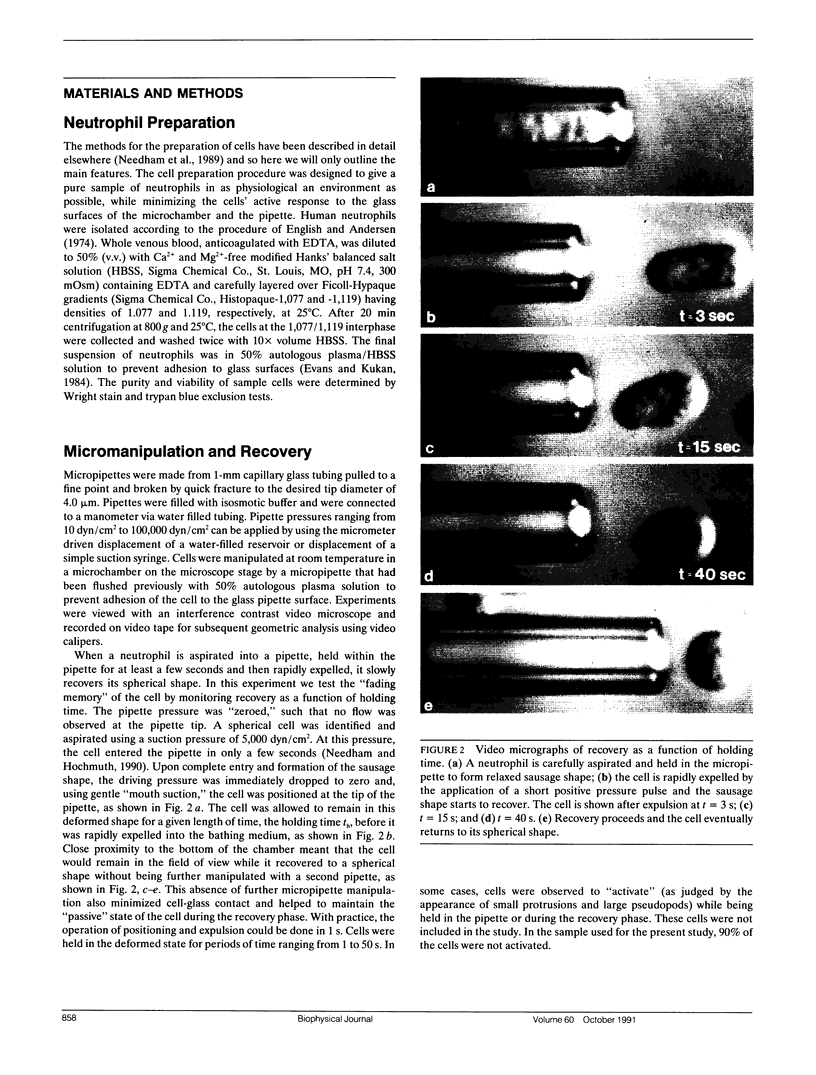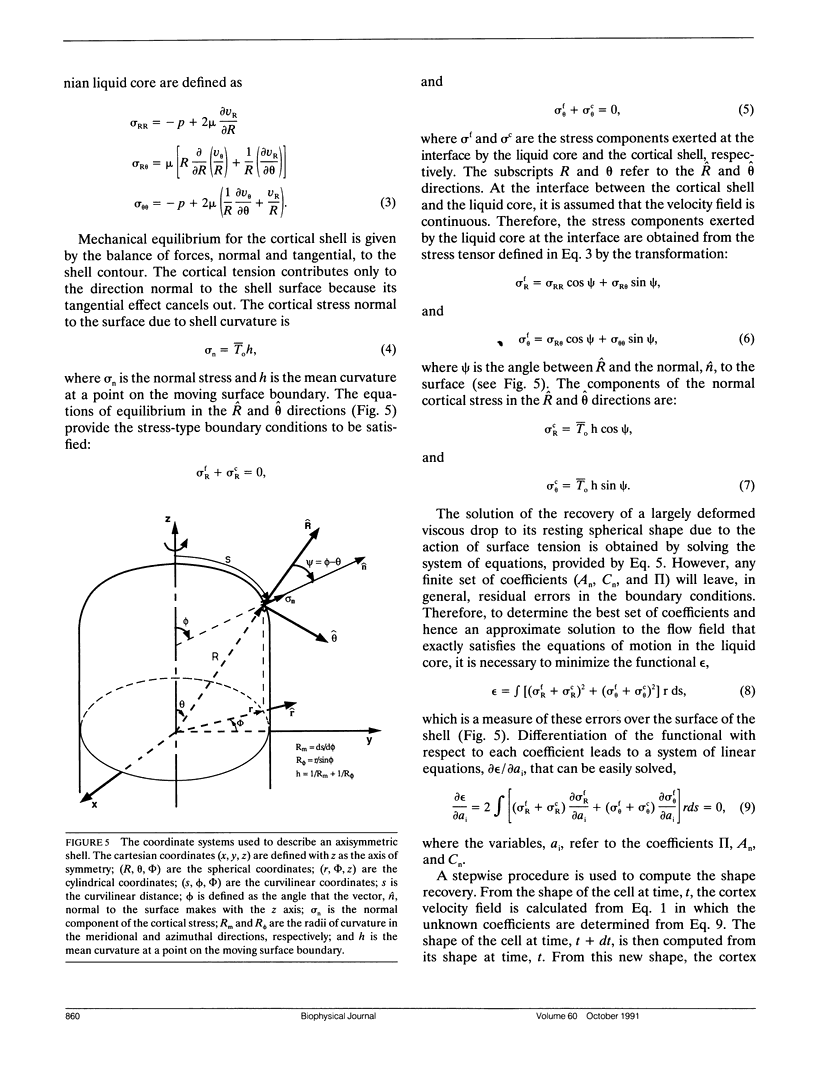Abstract
Experiments are performed in which a passive human neutrophil is deformed into an elongated "sausage" shape by aspirating it into a small glass pipette. When expelled from the pipette the neutrophil recovers its natural spherical shape in approximately 1 minute. This recovery process is analyzed according to a Newtonian, liquid-drop model in which a variational method is used to simultaneously solve the hydrodynamic equations for low Reynolds-number flow and the equations for membrane equilibrium with a constant membrane tension. The theoretical model gives a good fit to the experimental data for a ratio of membrane cortical tension to cytoplasmic viscosity of approximately 1.7 x 10(-5) cm/s (0.17 micron/s). However, when the cell is held in the pipette for only a short time period of 5 s or less, and then expelled, the cell undergoes an initial, rapid elastic rebound suggesting that the cell behaves in this instance as a Maxwell viscoelastic liquid rather than a Newtonian liquid with constant cortical tension.
Full text
PDF










Selected References
These references are in PubMed. This may not be the complete list of references from this article.
- Dong C., Skalak R., Sung K. L., Schmid-Schönbein G. W., Chien S. Passive deformation analysis of human leukocytes. J Biomech Eng. 1988 Feb;110(1):27–36. doi: 10.1115/1.3108402. [DOI] [PubMed] [Google Scholar]
- English D., Andersen B. R. Single-step separation of red blood cells. Granulocytes and mononuclear leukocytes on discontinuous density gradients of Ficoll-Hypaque. J Immunol Methods. 1974 Aug;5(3):249–252. doi: 10.1016/0022-1759(74)90109-4. [DOI] [PubMed] [Google Scholar]
- Evans E., Kukan B. Passive material behavior of granulocytes based on large deformation and recovery after deformation tests. Blood. 1984 Nov;64(5):1028–1035. [PubMed] [Google Scholar]
- Evans E., Yeung A. Apparent viscosity and cortical tension of blood granulocytes determined by micropipet aspiration. Biophys J. 1989 Jul;56(1):151–160. doi: 10.1016/S0006-3495(89)82660-8. [DOI] [PMC free article] [PubMed] [Google Scholar]
- Needham D., Armstrong M., Hatchell D. L., Nunn R. S. Rapid deformation of "passive" polymorphonuclear leukocytes: the effects of pentoxifylline. J Cell Physiol. 1989 Sep;140(3):549–557. doi: 10.1002/jcp.1041400321. [DOI] [PubMed] [Google Scholar]
- Needham D., Hochmuth R. M. Rapid flow of passive neutrophils into a 4 microns pipet and measurement of cytoplasmic viscosity. J Biomech Eng. 1990 Aug;112(3):269–276. doi: 10.1115/1.2891184. [DOI] [PubMed] [Google Scholar]
- Schmid-Schönbein G. W., Sung K. L., Tözeren H., Skalak R., Chien S. Passive mechanical properties of human leukocytes. Biophys J. 1981 Oct;36(1):243–256. doi: 10.1016/S0006-3495(81)84726-1. [DOI] [PMC free article] [PubMed] [Google Scholar]
- Sung K. L., Dong C., Schmid-Schönbein G. W., Chien S., Skalak R. Leukocyte relaxation properties. Biophys J. 1988 Aug;54(2):331–336. doi: 10.1016/S0006-3495(88)82963-1. [DOI] [PMC free article] [PubMed] [Google Scholar]
- Yeung A., Evans E. Cortical shell-liquid core model for passive flow of liquid-like spherical cells into micropipets. Biophys J. 1989 Jul;56(1):139–149. doi: 10.1016/S0006-3495(89)82659-1. [DOI] [PMC free article] [PubMed] [Google Scholar]


